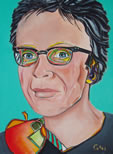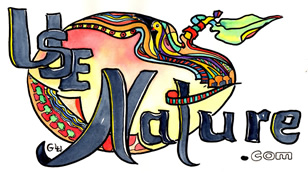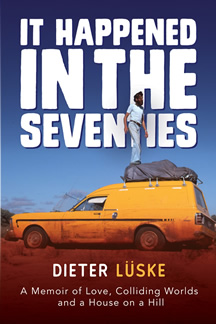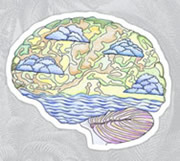useNature.com ... Holistic Health - Emotional Choice Counselling - NLP Anchoring Techniques
NLP Anchoring Techniques
EMOTIONS AND THEIR FUNCTIONS
Lifestyle Online Magazine - Holistic Health Information
Article: Emotional Choice - NLP Anchoring Techniques

Article extracted from a workshop & book called:
DO YOU BELIEVE IN YOU - by Dieter Luske© - Gold Coast
... all following articles, are written as workshop manuscript
... questions were asked to stimulate active participation.
ARTICLE NUMBER - 26 - Chapter Three
EMOTIONS AND THEIR FUNCTION
NLP Anchoring Techniques
Keeping an Emotion by Anchoring Techniques ...
THE TWO WAYS OF ANCHORING YOURSELF:
All we have talked about so far, is inadvertent anchoring. - Now we are talking about self-anchoring.
There are two kinds of anchors, one works with physical associations and the other with mental associations.
1. PHYSICAL ASSOCIATION
Have you ever noticed a sports person, (say a tennis player), forming a fist and saying "YES," after making a good shot?
Yes? ... Good - that is a Physical Anchor.
The feeling of success is now anchored and the next time that player makes a fist, the anchor will fire up the successful feeling, therefore firing the player with more confIdence.
Now that you know this anchoring technique, you could make a fist a few times after you have made some good shots, then when you start a new game, you can use that anchor, to give yourself the edge for success.
We are going to use this technique now, and like the tennis player we are going to use the 'forming of a fist' as our anchor. Once you have an anchor, you have to remember what that anchor was. If you use your right fist to establish the anchor, you have to use your right fist in the same fashion to re-activate that anchor.
You could use anything to establish an anchor, like touching your ear, holding your hands, pinching your leg, or whatever would be convenient in the situation in which you want to use that anchor.
Whenever you establish an anchor, you have to be able to go into a good visualisation and once you feel that wanted emotion strongly enough, you form your fist.
I will now give you a short outline of a typical visualisation. It is your choice, whether you want to put that on a tape to listen to, or use it by remembering it and telling it to yourself in your mind.
SELF-ANCHORING:
Sit comfortably, close your eyes, and tell yourself you are relaxed, safe and secure in your present situation. Now in your mind, go back to a memory, an experience of feeling confident - really confident. Pick out something strong, and when you have it, see, hear and feel how it was when you were really confident.
If you can see yourself in that mental picture, then step into yourself and become that confident person and feel that confidence now.
When you really feel it, make a fist, a strong, good fist!
Now open your eyes, taking that feeling with you, it's yours to keep. Nobody can take it away from you, ever! To make the anchor stronger, put other strong relevant feelings on top.
Now you will have a strong anchor for any situation where you need some extra confidence. The next time you ask for a pay rise or an important negotiation, make a fist just before you need it. It will re-activate a feeling of confidence. It is now up to you what emotions you need to anchor and it is also up to you to know when to use them.
Preparing for such a situation is always the best way of coming out on top. Have your anchors ready.
You can have one emotion anchored with your fist, another one touching your ear etc.
SHORT ANCHOR OUTLINE:
Identify the emotion you need.
- Remember when you experienced that emotion fully.
- Step back into yourself and in this memory, seeing what you saw, hearing what you heard, and most important, feeling what you felt.
- Once you feel that emotion, make a fist or what ever you use as an anchor. Maintain your anchor, open your eyes and bring back the emotion with you into the present.
- Later, test the anchor by making a fist, you should be able now to feel the desired emotion, if not, start again. With strong emotion, intensify whatever you have done before and add more memory.
2. MENTAL ASSOCIATION
A mental association or mental anchor is achieved by repeating in fast succession a positive mental picture overlapping a negative mental picture.
The following technique is called by NLP practitioners, the Swish. It is definitely one of my favourites and one of the best attitude changing techniques I know. It has the advantage of being extremely fast. Once you have trained yourself in that technique, you can virtually use it for all situations in a matter of minutes.
SWISH TECHNIQUE:
The anchor technique uses physical associations, whereas the swish uses mental associations.
Settle down once again, close your eyes, take three deep breaths and with each breath you take, feel more and more deeply relaxed.
a) Think of something you would like to improve in yourself. If you have found something, start by visualising yourself in that situation.
The above refers to an association. For example, suppose you wanted to stop smoking. Make a mental picture of yourself smoking, then step into yourself, becoming that person. Now you are associated with yourself, seeing only what is around you. In the case of smoking, you can now see the hand with the cigarette coming to your mouth.
Click, make a picture of that (mentally). This should produce a bad kind of feeling, if not, choose something else, (you need to trigger a bad feeling to make this work). If you feel enjoyment at this moment, it obviously would not stop you smoking.
Associate that picture with something you definitely can't stand. If you have it, then put a frame around it.
This is the frame now of your bad picture. Open your eyes. Close your eyes again, can you get that bad picture back again, quickly? Do it, till it comes back quickly, with the bad feeling attached to it.
b) Close your eyes again, and this time you see yourself the way you would like to see yourself, as if you had changed already. This should create a strong positive emotion. This would be a dissociation, as you see yourself as in a video or as in a picture. The good feeling is triggered this time by that good picture you see of yourself. You simply like what you see and that makes you feel good. We call this the good picture. Shrink this picture into passport size.
c) Now comes the swish. In the time it takes me to say sswwiiiiisssshhh, you have to see that bad picture with the frame around it, put the good passport size picture into a lower corner of the bad picture, and then while you shrink and darken the bad picture, you enlarge at the same time the good picture and make it bright and beautiful, until it covers all your mental vision.
Therefore all you see is that good picture of yourself, making you feel good. - Do this five times, fast.
If the bad picture still comes back easily, repeat that swish, till you find it hard to trigger the bad picture. If you want to smoke now, the picture, (this time real), of your hand coming to your mouth would trigger the good picture. Feeling good about yourself, would make you put that cigarette back in the packet.
Remember, it always depends how strongly and effectively you visualise and how strongly you can feel your emotions.
A second factor can be another 'sense'. If the swish is not working well enough, then you have to extend your visualisation, to make it real enough to actually connect the sense of hearing, tasting, smelling into the picture.
If you have to do public speaking and have problems doing so, this is the technique to overcome your fears. In this instance, the bad picture would be the people staring at you. The good picture would be seeing yourself in your best performance. Swish those pictures.
After your performance or speech is successfully behind you, use the anchor technique, make a fist, yes, I did it. Your next public speaking engagement will be a piece of cake, you trigger the successful anchor just before going on. If that is not enough you can still do a quick swish.
Exercise, practise, it works, but you have to do it, it needs your input and action.
There is one more little point. If you wish you can even change your past experiences, you definitely can have much more influence over the present and I suggest you prevent as far as you can any disaster in the future.
Present: when you are in an unsatisfactory emotional situation, specify just how you are feeling and behaving. '(awareness is everything). Take a deep breath, "step away from yourself," and do a quick swish.
Future: prevention. Whatever future situation is coming up for you, make sure you have a strong anchor of confidence and have done a strong swish exercise.
Always let the positive, powerful picture blend out the negative one!
WHAT YOU HAVE ACHIEVED NOW
Most people either tolerate their unwanted emotions or do their best to avoid situations that could affect them. Either way, they don't have an emotional choice, because it has never occurred to them to choose.
You have this choice now, starting in the beginning by asking yourself: "Do I want to be a victim?" to actually triggering the emotion you need.
Therefore your life becomes a life of CHOICE as you choose what kind of life you want to live and to design for your self.
This concludes Chapter 3 - Emotions ....
.. to be continued with >>> Chapter 4 - Goal Setting and Purpose
Next: Article 27 - click > Goal Setting
Article provided by the Editor - Dieter L.
Excerpt from a workshop & book - published 1993 - titled; "Do you believe in You"
www.usenature.com - Dieter Luske ©
or go back to the Article Menu > Self Help Article Menu

Dieter Luske- Editor
Buy Now
It happened in the seventies
A Memoir of Love, Colliding Worlds and a House on a Hill
Intriguing story of personal risk-taking, self-discovery and profound change.
Dieter Luske
author . writer . editor


